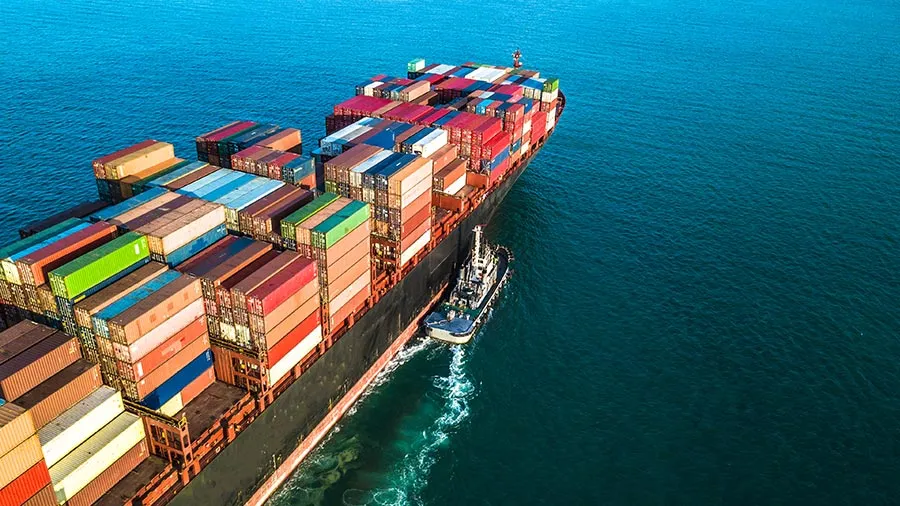In the last fiscal year, Pakistan reduced its goods trade deficit to approximately $24.1 billion from around $27.5 billion the previous year, thanks to a 10.5% increase in exports and a slight decrease of less than 1% in imports.
This reduction in the trade deficit is significant, primarily due to the rise in exports, and should be acknowledged. Additionally, the country’s home remittances grew by 10.7% in the last fiscal year, reaching $30.3 billion from $27.3 billion the previous year. This is also positive news for Pakistan, which is struggling with a forex shortage.
However, it’s important to note that the increase in remittances is largely because more Pakistanis, disillusioned by the deepening political and economic crisis at home, are seeking employment abroad. In 2023, 862,625 Pakistanis left for overseas jobs, compared to 832,339 in 2022.
Despite this, the growth in exports and remittances — two main sources of non-debt forex inflows — offers hope for a gradual improvement in our external economy, which relies heavily on external borrowings. These past borrowings have become substantial, limiting our repayment capacity. This is why Pakistan is seeking a new $6 billion loan from the International Monetary Fund (IMF) after meeting stringent conditions set by the Fund.
While exports and remittances have resumed growth, foreign investment has not increased enough to counteract the rapid outflow of profits and dividends.
Prime Minister Shahbaz Sharif asserts that the government has met these stringent (and politically costly) conditions to stabilize the economy and avoid further IMF borrowing. However, this is more of a political statement aimed at appeasing 241 million Pakistanis who are enduring the IMF-mandated energy and taxation reforms.
These reforms are not only keeping inflation high (23.4% in FY24) but are also contributing to sluggish economic growth (2.4% in FY24) and high unemployment (10.3% in 2024 vs. 6.3% in 2021).
Pakistan’s external debt is enormous, its external economy is weak and geopolitically dependent, and the political system is heavily influenced by the interests of the ruling civil-military elite, making it difficult to “get rid” of the IMF. At the end of March 2024, Pakistan’s total external debt and liabilities stood at $130.4 billion, according to the latest State Bank of Pakistan (SBP) report.
Despite rollovers of billions of dollars in Chinese, Saudi, and UAE loans, Pakistan spent $3.33 billion on external debt servicing in just one quarter (January-March 2024), the report reveals.
The recent rise in taxation rates and continuously rising energy prices are also challenging services exports, as much as they are hindering goods export industries.
This large quarterly external debt servicing will likely become more challenging for three reasons. First, imports are expected to grow faster this year than last year after the IMF-mandated removal of tariff and non-tariff restrictions. Second, repayments of relatively expensive external debts obtained in 2021 and later are now due. Third, while exports and remittances are growing, foreign investment has yet to increase sufficiently to offset the faster outflow of profits and dividends from multinational companies and foreign investors.
In the last fiscal year’s eleven months, net inflows of foreign direct investment totaled just $1.73 billion, and net foreign portfolio investment was $116 million. These amounts are too low to offset the $1.8 billion outflow in the same period for repatriation of profits and dividends by multinational companies in Pakistan.
Following IMF instructions, Pakistan has cleared the backlog of such outflows and has decided not to hold them anymore. The overall balance of payments was negative by $2.45 billion in the eleven months leading up to May 2024, highlighting the severity of the forex shortage. Foreign exchange reserves with the SBP ($9.41 billion as of July 5) cover only two months of goods imports, below the internationally acceptable minimum of three months.
One potential way to manage the growth of external debt and avoid further deterioration in the external economy is to seek debt restructuring. Pakistan has initiated negotiations to restructure $15 billion in Chinese energy loans.
However, the proposed restructuring is expected to provide only limited relief, potentially reducing Chinese debt servicing by $600 million to $750 million per year but at a high cost: in the long run, Pakistan would have to pay an extra $1.3 billion.
Even if this condition is waived, reducing the annual debt servicing requirement by $600 million to $750 million would have little impact on the overall balance of payments if imports increase and foreign investment does not grow significantly. Thus, all eyes are on the promised foreign investment inflows from Saudi Arabia and the UAE.
A significant increase in services exports, particularly IT and IT-enabled services (IT-es), could make a difference. The government has set an ambitious target of $25 billion in IT and IT-es exports by 2029, up from around $3.2 billion in FY24. However, the recent rise in taxation rates and continuously rising energy prices challenge services exports as much as they hamper goods export industries.




